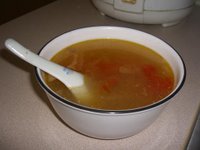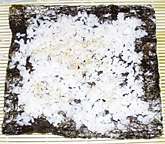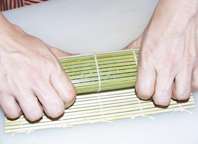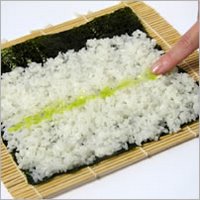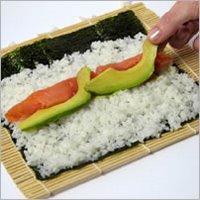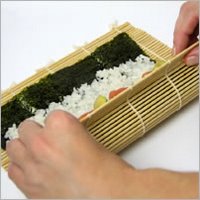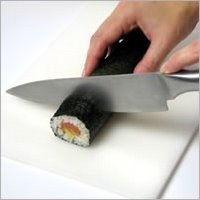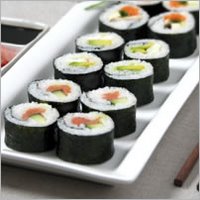People immediately think of Sichuan food as being hot, sour, sweet, and salty; using fish sauce; or having a strange taste. Actually, these flavors were introduced only in the last 100 years, and initially were popular only in the lower strata of society. Hot pepper, an important flavoring in Sichuan cuisine, was introduced into China only 200 to 300 years ago.
During the period of the Three Kingdoms, the kingdom of Shu was located in Sichuan. According to historical research, the people in Shu liked sweet food. During the Jin Dynasty, they preferred to eat pungent food; however, pungent food at that time referred to food made with ginger, mustard, chives, or onions. As recently as 200 years ago, there were no hot dishes in Sichuan cuisine, and few were cooked with pungent and hot flavorings.
Originally, its flavorings were very mild, unlike the popular dishes of today, such as pockmarked lady’s bean curd and other hot dishes, Even today, some Sichuan dishes, like velvet shark’s fin, braised bear’s paw, crisp duck roasted with camphor and tea, sea cucumber with pungent flavor, minced chicken with hollyhock, boiled pork with mashed garlic, dry – fried carp, and boiled Chinese cabbage have kept their traditional flavors.
Sichuan has been known as the land of plenty since ancient times. While it does not have seafood, it produces abundant domestic animals, poultry, and freshwater fish and crayfish. Sichuan cuisine is well known for cooking fish. As a unique style of food, Sichuan cuisine was already famous more than 800 years ago during the Southern Song Dynasty when Sichuan restaurants were opened in Lin’an, now called Hangzhou, its capital city.
The prevailing Sichuan food consists of popular dishes eaten by common people and characterized by pungent, hot, strange, and salty flavors. Although Sichuan cuisine has only a short history, it has affected and even replaced more sumptuous dishes.
The hot pepper was introduced into China from South America around the end of the 17th century. Once it came to Sichuan, it became a favored food flavoring. Sichuan has high humidity and many rainy or overcast days.
Hot pepper helps reduce internal dampness, so hot pepper was used frequently in dishes, and hot dishes became the norm in Sichuan cuisine. Sichuan food has become the common food for most people in the area, especially since the dishes go well with rice.
In this respect, Sichuan cuisine differs from Beijing cuisine, which was mainly for officials and nobility; Huai – Yang cuisine, which was mainly for rich, important traders; and Jiangsu – Zhejiang cuisine, which was mainly for literati. Typical, modern Sichuan dishes like twice – cooked pork with chili sauce, shredded pork with chili sauce and fish flavor, Crucian carp with thick broad – bean sauce, and boiled mat slices are common dishes eaten by every family.
Sichuan food is famous for its many flavors, and almost every dish has its own unique taste. This is because many flavorings and seasonings are produced in Sichuan Province. These include soy sauce from Zhongba, cooking vinegar from baoning, special vinegar from Sanhui, fermented soy beans from Tongchuan, hot pickled mustard tubers from Fuling, chili sauce from Chongqing, thick, broad – bean sauce from Pixian, and well salt from Zigong.
Sichuan pickles have an appealing smell, and are crisp, tender, salty, sour, hot, and sweet. If pickled elsewhere, even if made the same way using the same raw materials, they still would taste different. This is because the salt, which comes from wells in Zigong, has a unique flavor. In other places, sea salt is often used, which tastes slightly bitter. This example demonstrates that the flavoring materials are very important, apart from the skill of the cooks.
In Sichuan food, a single flavor is rarely used, compound flavors are most common. By blending different seasonings, skilled cooks can make dozens of different sauces each with its own flavor, including creamy, salty, sweet and sour, litchi, sour with chili, hot with chili, spicy and hot, mashed garlic, distiller’s grain, fish sauce with chili, ginger juice, and soy sauce.
The same sauce may be used differently in different dishes. For example, the flavor of the hot with chile sauce for boiled sliced pork is different from the flavor of the hot with chilli sauce for pockmarked lady’s bean curd.
When flavoring foods, sometimes two or more flavorings are combined, and sometimes a hot fire is used to concentrate the extract from the dish to increase the intensity of the flavor, preserve the primary taste of the dish, remove unpleasant flavors, and increase pleasant flavors.
Sichuan cuisine tends to use quick – frying, quick stir – frying, dry – braising, and dry – stewing. In quick – frying and quick stir – frying, the food is fried over a hot fire and stirred quickly without using another pan. For example, it takes about one minute to stir – fry liver and kidney to keep it tender, soft, delicious, and fresh.
The raw materials for dry – braising are mostly fibrous foods like beef, radish, balsam, and kidney beans. These foods are cut into slivers, heated in an iron pot and stirred continuously. Flavorings are added when there is only oil left and the water has disappeared. When the dish is ready, it is dry, fragrant, crisp, and soft.
Dry – stewing is similar to stewing in the Beijing cuisine, but the primary soup or extract in the dish must be condensed over a low fire before the thick broad – bean sauce or hot red pepper is added. No starch is used. When the dish is ready, it looks faddish, oily, and shiny and tastes delicious, crisp and soft. Typical dishes are dry – stewed fish and dry – stewed bamboo shoots.
Sichuan cuisine also has many delicious snacks and desserts, such as Bangbang chicken, chicken with sesame paste, lantern shadow beef, husband and wife’s pork lung slices, steamed beef, noodles with chilli sauce, and rice dumplings stuffed with sesame paste.
